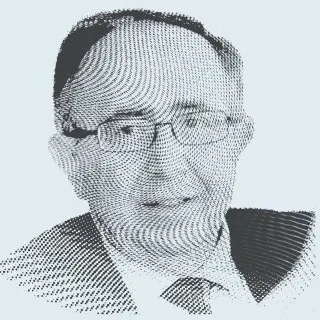Hezbollah recently released a video depicting a military facility in which vehicles loaded with missiles move across extensive, fortified, and illuminated tunnels. There had been talk about Hezbollah's tunnels before it made these unprecedented revelations. However, the matter did not receive the attention it deserved given the gravity of its implications and objectives. Some tied the announcement and its timing to the retaliation of the party to Israel's assassination of senior Hezbollah figure, Fuad Shukr. Regardless of the reasons for this revelation, which are important and fundamental, it has several dimensions. Some are related to the party, its path, behavior, and goals in Lebanon, others to Lebanon’s official stance, and still others to the popular perception of the party and the stance of ordinary Lebanese people regarding an event of this magnitude and gravity in national, political, and security terms.
First, it should be noted that digging tunnels has become prevalent in the Middle East. For over 15 years, Israeli outlets have been reporting on Hezbollah's reinforcement of its positions in southern Lebanon through the construction of tunnels throughout this troubled region. Having begun building a network of tunnels under Gaza that reaches Rafah and is reportedly 500 kilometers long, Hamas preceded Hezbollah in this regard. Right-wing Jewish settler groups have also joined in on the action, digging a tunnel between the City of David and Mughrabi Gate in the Old City of Jerusalem.
Naturally, each of these tunnel-digging initiatives serves particular objectives. Hezbollah had been preparing for a future battle with Israel, which it is now engaged in. Hamas dug tunnels to smuggle goods and weapons into Gaza and then turned them into fortified locations that have allowed it to continue fighting this war more than nine months after it began. The Israeli settlers, on the other hand, built it as part of an attempt to covertly link Jewish heritage sites.
These tunnels are being dug by powerful non-state actors who believe they have the right to operate underground, and anywhere else, in the name of a grand and sacred cause, disregarding state sovereignty, whether in Lebanon, Israel, or elsewhere. The saddest aspect of all of this is that elements within the sovereign state had known about or been complicit in this project. This reflects the hollowness of the authorities in question; it shows that they are either weak, do not take themselves seriously, or are complicit. Israel, for example, overlooks or acquiesces to the agendas of certain non-state actors.
These ideological non-governmental actors have sought to undermine states’ legitimacy in the Middle East for years. They have succeeded in making it impossible for states to obstruct their expanding destructive activities. We see this in Lebanon and, to an extent, Israel, where racially motivated religious extremist groups have mushroomed organically, creating visible fractures in Israeli society. "Non-state sovereignty" has become a real issue in the region, and “tunnel behavior” has become its latest manifestation.
All of this sets the stage for revisiting the three Lebanese dimensions of Hezbollah's decision to exhibit its tunnels, regardless of their actual size or number. The video should not come as a surprise. Indeed, tunnels have been part and parcel of the party's strategy for decades. It is also a reflection of the unilaterality of Hezbollah's actions and how the party has transformed, due to accumulated breaches, into the de facto ruler of the country. Hezbollah does not need to hide anymore. In fact, it is now the one who provides cover and support to complicit Lebanese factions and forces. Tunnels of this magnitude, which are possibly located in several regions of the country, provide glaring evidence of this occupying force’s capacity to expand its influence in a variety of regions, possibly beyond the south, as a result of nation authorities’ collapse, the complicity of some state elements, the sycophancy and opportunism of certain political forces, and the complacency of others who have prioritized personal gains over the course of decades.
As for the dimension tied to the Lebanese state, with that the concept of statehood having dissipated completely, it is no longer hyperbolic to assert that Lebanon is nothing more than a geographic space that has been reduced to "Hezbollah." The government is incapable of providing basic services like electricity, water, health, and education; how could possibly complain to the international community on behalf of those whom it represents? After the tunnels were exhibited publicly, the caretaker government became a bankruptcy trustee and a mediator for international parties seeking to prevent an expansion of the conflict.
Most frighteningly of all, there has been no popular reaction. The country has not seen a single protest or sit-in denouncing these practices. With the exception of the troubled southern regions and a few folkloric stances in the media whose only impact is to put their opposition on the record positions, life has continued normally and Lebanon is brimming with parties and festivals.
Adaptation, surrender, or despair are deadly diseases in Lebanon. No force could prevent a million Lebanese carrying lit candles every night in Martyrs' Square and merely demanding peace in Lebanon, instead of attending festivals in the thousands. Only a million candles could make an attempt at pulling Lebanon out of its new and old tunnels that Lebanon has remained in.
TT
A State in a Hole and a Party in a Tunnel
More articles Opinion
لم تشترك بعد
انشئ حساباً خاصاً بك لتحصل على أخبار مخصصة لك ولتتمتع بخاصية حفظ المقالات وتتلقى نشراتنا البريدية المتنوعة











